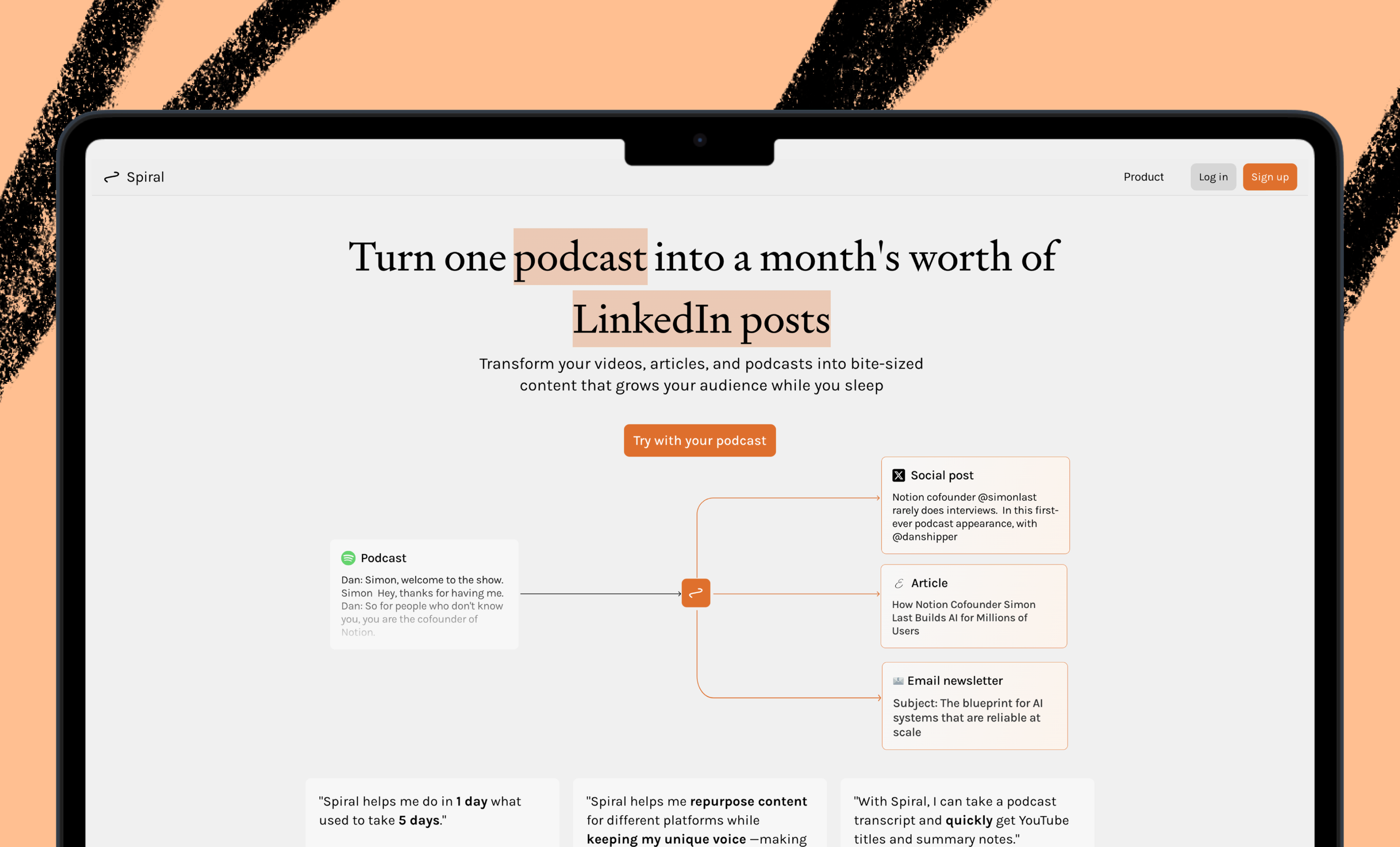.37.18_AM.png)
What happens when a content marketer starts making GitHub pull requests, building AI agents that tweet in their CEO's voice, and constructing systems that reformat and distribute writing across platforms? They transform into something new—a “content engineer” (that's distinct from “context engineer”). Shreeda Segan walks us through her own professional metamorphosis, showing how she built an AI system that freed up hours she used to spend ghostwriting each week. The result was a whole new career path—one that comes with ample time to focus on what humans do best.—Kate Lee
Six months ago, I was ghostwriting tweets for my CEO. Last month, I shipped an AI agent that does it for me.
I used to spend hours crafting changelogs, blog posts, and tweetstorms in my CEO’s voice. Often we’d “pair-write.” I would send him a first draft and we’d jump on a call together while he made edits to the text, sharing his rationale behind every tweak.
Last month, I built an AI agent that could tweet like him—not just mimic his style, but learn from his best posts and get better with every edit I made. I wasn't just a writer anymore. I was becoming something new: a content engineer.
I've been working for Mastra.ai, an open-source programming framework that gives developers access to the building blocks of AI engineering, since last fall, witnessing firsthand how traditional content strategy and marketing roles are transforming. This is the future of content marketing: not just creating content, but building systems that scale your writing across channels, formats, and audiences.
Just as one AI engineer can now do the work of three or four traditional engineers, a content engineer uses automation to produce content at the scale of multiple writers—while maintaining quality and voice consistency. In other words, AI has created a new type of creative professional who builds systems for communication instead of just writing. Here's why that transformation matters and, if you’re interested, how to go through it yourself.
A clean computer that stays clean
Thinkers of all sorts need open space to develop their ideas. But if you’re like us, you probably find that your digital spaces are cluttered more often than not, with Screenshots, PDFs, and downloads. Our AI tool Sparkle cleans your computer so you don’t have to.
Finding my role—and naming it
I've been writing in journals or online since I was 8 years old. It's how I process complex thoughts, understand the world, and express what I can't say out loud. After studying both writing and computer science in college, I spent three years as a brand marketer at online banking platform Mercury.
But during my contract work as a writer with Mastra.ai, something shifted in how I understood my role. I found myself making my first pull requests in GitHub, using Cursor as a co-writer for technical documents, and learning frameworks like Mastra itself. I discovered that the most interesting work was happening in the spaces where writing, AI, and building intersected.
When the CEO offered to bring me on full time this April, he had Rippling open on his laptop, waiting for me to define my own role. I pitched "content engineer" almost as a joke, because I’d never heard of such a title, but also because it echoed titles like “prompt engineer” and “AI engineer.” And it stuck. My official mandate (as I later wrote in my job description) was to write and use AI to build systems to scale the same content across platforms.
I soon discovered I wasn't alone in recognizing this shift. Stedi, a healthtech company, had independently arrived at the same role: It was searching for a content engineer, which it defined as someone who can use AI to go through all their internal documentation and meeting notes and build systems that turn this information into publishable content.
The role crystallized after our CEO said he wanted to share more insights on X but didn't have time to draft every thread himself. Over several months, I collected his best tweets and used Cursor and Mastra to build an agent that learned his voice. Using Mastra's model context protocol (MCP) support and documentation server, I connected Mastra with Typefully to create a workflow that drafts tweets in his style—mostly lowercase, no emojis, speaking directly to developers without any marketing-speak or corporate fluff.
The system saves me 5-6 hours per week. Instead of ghostwriting from scratch, I edit AI-generated drafts that improve with every interaction and learn from my feedback. The edits don't disappear—they become training data for the next iteration. It's not perfect, but it constantly gets better.
As I’ve grown more confident, I’ve found other efficiencies, too: I utilize Cursor to write weekly copy for our changelog by checking it directly against our codebase, as well as templates and prompts shared across our team that help us maintain consistent tone and structure when we write case studies. Each tool saves hours and helps our ideas travel further.
Writing as creative direction
This work has taught me something crucial: AI engineering and writing are both iterative crafts...
Become a paid subscriber to Every to unlock this piece and learn about:
- Why writing has moved up the abstraction ladder
- How AI transforms distribution as well as creation
- Three steps to becoming a content engineer
Ideas and Apps to
Thrive in the AI Age
The essential toolkit for those shaping the future
"This might be the best value you
can get from an AI subscription."
- Jay S.
Join 100,000+ leaders, builders, and innovators

Email address
Already have an account? Sign in
What is included in a subscription?
Daily insights from AI pioneers + early access to powerful AI tools






Comments
Don't have an account? Sign up!